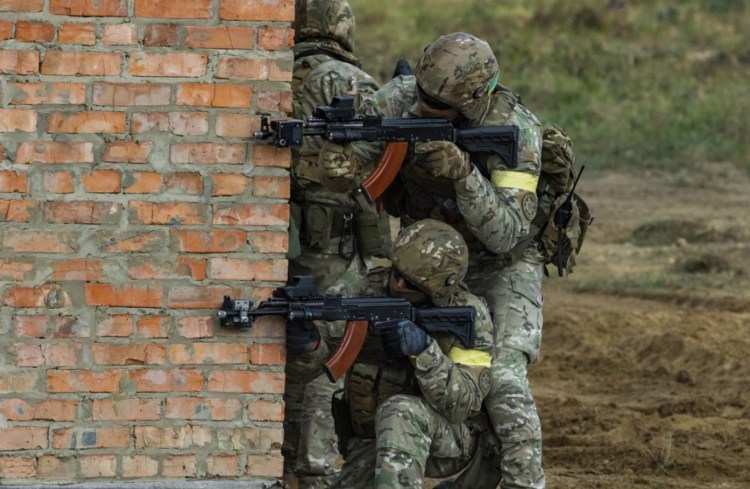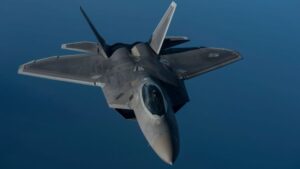Precise Language Avoids Misunderstandings
Forgive me for not using the word “gun” in the title of this piece. From day one in the Army, we were taught never to refer to the small arms we carried as guns. But, of course, most recruits didn’t know any better until an instructor was up their face yelling about it.
New Recruit: “Hey Sergeant, when do we get our guns?”
Sargeant: “What did you say?!! Private, do you think you are in the f*****g Navy!!”
New Recruit (confused): “No, Sergeant.”
Sargeant (mock agitated): “Do you see any f*****g ships around here, Private Snuffy? Guns are on ships. You joined the Army. We carry weapons here. Don’t forget it!!”
And we never forgot.
According to the US Department of Defense:
For the purpose of DoD, small arms and light weapons are defined as man-portable weapons made or modified to military specifications for use as lethal instruments of war that expel a shot, bullet or projectile by action of an explosive. Small arms are broadly categorized as those weapons used by individual members of armed or security forces. They include handguns; rifles and carbines; sub-machine guns; and light machine guns. Light weapons are broadly categorized as those weapons designed for use by two or three members of armed or security forces serving as a crew, although some may be used by a single person.
Precise Language Avoids Misunderstandings
Forgive me for not using the word “gun” in the title of this piece. From day one in the Army, we were taught never to refer to the small arms we carried as guns. But, of course, most recruits didn’t know any better until an instructor was up their face yelling about it.
New Recruit: “Hey Sergeant, when do we get our guns?”
Sargeant: “What did you say?!! Private, do you think you are in the f*****g Navy!!”
New Recruit (confused): “No, Sergeant.”
Sargeant (mock agitated): “Do you see any f*****g ships around here, Private Snuffy? Guns are on ships. You joined the Army. We carry weapons here. Don’t forget it!!”
And we never forgot.
According to the US Department of Defense:
For the purpose of DoD, small arms and light weapons are defined as man-portable weapons made or modified to military specifications for use as lethal instruments of war that expel a shot, bullet or projectile by action of an explosive. Small arms are broadly categorized as those weapons used by individual members of armed or security forces. They include handguns; rifles and carbines; sub-machine guns; and light machine guns. Light weapons are broadly categorized as those weapons designed for use by two or three members of armed or security forces serving as a crew, although some may be used by a single person.
Now that we have that out of the way, here is a sampling of some of the small arms used by the Ukrainian military.
AK-74
AK-74 assault rifle. Image Credit: modernfirearms.net
This is the Kalashnikov AK-74 assault rifle. No, that’s not a typo, and I didn’t get my numbers reversed; it’s an AK-74, and the Soviet Army first adopted them in 1974. Clever, huh? There are hundreds of thousands of these in Ukraine, and President Zelensky said, at one point, he’d give one out to any Ukrainian citizen who wanted to use it to fight the Russians. Right now, you are probably wondering how this differs from the AK-47.
Well, the AK-47 is older; it came into service in 1949. But both weapons were designed by the same person (Mikhail Kalashnikov) but were manufactured by Izhmash and Izhevsk Mechanical Works, respectively. AK-47s weigh 4.3 kg, and the AK-74 weighs considerably less, at 3.03 kg. The AK-47 fires a 7.62 round, while the AK-74 fires a 5.45 round. Both rifles are gas-operated with a rotating bolt. The rate of fire for the AK-47 is 600 rounds per minute, whereas the rate of fire for the AK-74 is slightly faster at 650 rounds per minute. The AK-47 has a slightly lower muzzle velocity at 715 meters/second, and the muzzle velocity for the AK-74 is 900 meters/second.
There are many variants of the AK-74. One of them (known as the Krink) has a shortened barrel and is well suited for close-quarters combat. Its official designation is the AKS-74U.
AK-47
Quite similar in name and appearance. This is an AK-47. Image Credit: globalriskinsights.com
Although somewhat older than its counterpart, there are still several in use in Ukraine that were used against Russian forces during the February 2022 invasion. The AK-47 is the original, old-school Kalashnikov. Over 100 million of them have been made, more than half of them outside of Russia under expired Soviet licenses or no license at all. See above for the specs.
AKM
Strong family resemblance, the AKM. Image Credit: weaponsystems.net
The AKM is a variant of the AK-47. It is the Avtomat Kalashnikova Modernizirovanniy, roughly translated as the automatic Kalashnikov, modernized. This new-fangled version of the AK-47 went into full production in 1959.
The main difference between the AK-47 and the AKM is the use of stamped sheet metal for the receiver. This makes the AKM lighter and less costly to produce than the machined receiver of the AK-47.
M4 WAC-47
The M4 WAC-47. Image Credit: Wikimedia Commons
There’s that damn “47” designator again. They just can’t seem to get away from it in Ukrainian weapons. Unlike the three above, this one was not designed by Mikhail Kalashnikov. The configuration shown on the bottom features an M203 grenade launcher. This Ukrainian assault rifle was created by Ukroboronprom (a Ukrainian defense industry conglomerate) and an American company named Aeroscraft.
It’s more or less a clone of an M4 carbine. It is constructed out of the same aluminum alloy with a two-part receiver, direct gas impingement system, and many parts and assemblies common to the AR15/M4. It went into use with the Ukrainian military in 2017 but is far from perfect. It was issued to fire 7.62×39 rounds, which have been in widespread use in Ukraine since Soviet times. There are plans in the works to modify it to fire a 5.56×45 NATO round, should they ever join the alliance.
The old Soviet-style M43 cartridge is poorly suited to the AR platform, and the M4/M16/AR15 magazine shape is poorly suited for the tapered 7.62 round. It’s not a marriage made in heaven. To make matters worse, the direct impingement gas system is far from ideal when firing old stock of 7.62 ammo. The old Soviet-era ammo tends to leave a lot of burnt powder residue.
In part two of the series, we’ll look at some weapons used by the Ukrainian Special Forces and some Ukrainian military sidearms.



